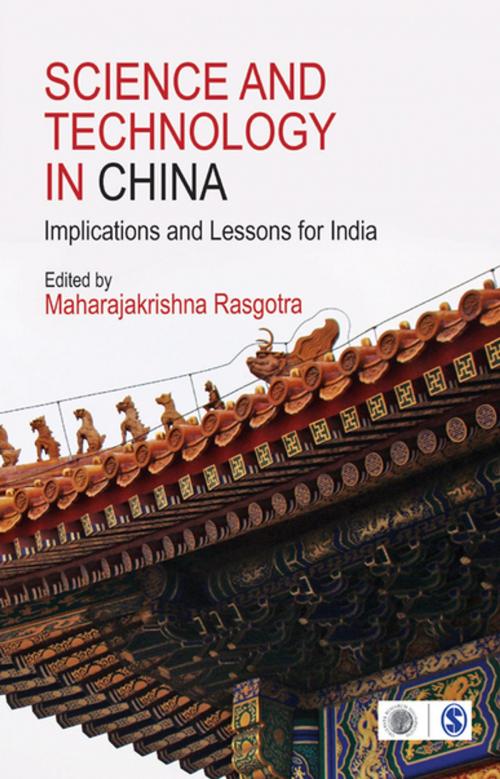Science and Technology in China
Implications and Lessons for India
Nonfiction, Social & Cultural Studies, Political Science| Author: | ISBN: | 9788132117643 | |
| Publisher: | SAGE Publications | Publication: | June 30, 2013 |
| Imprint: | Sage Publications Pvt. Ltd | Language: | English |
| Author: | |
| ISBN: | 9788132117643 |
| Publisher: | SAGE Publications |
| Publication: | June 30, 2013 |
| Imprint: | Sage Publications Pvt. Ltd |
| Language: | English |
Science and Technology in China discusses the changing structural and institutional context of scientific research in China. The new environment of global competition entails that the norms of generation of new knowledge are as important as those for innovation and commercialization. China has been able to achieve this in a largely state-controlled environment, where political will and commitments have played an increasingly important role. India, on the other hand, is still caught in a paradox of too much democracy at all levels of social and economic activity. It needs a big political push and inclusive decentralized approach to realize its well-defined plans and objectives to make its international presence felt.
The essays focus on China’s nuclear programme, space technology, aviation, aeronautics, IT and industrial development. The contributors conclude that India has to carefully tailor its own military strategy and diplomacy in the Asian region to greater effect with better harnessing and utilization of its strengths in science and technology. The reforms, policy initiatives and strategies in multiple sectors initiated by China contain crucial lessons and one key message for India—the need to pursue a coordinated and single-minded strategy to achieve its goals.
Science and Technology in China discusses the changing structural and institutional context of scientific research in China. The new environment of global competition entails that the norms of generation of new knowledge are as important as those for innovation and commercialization. China has been able to achieve this in a largely state-controlled environment, where political will and commitments have played an increasingly important role. India, on the other hand, is still caught in a paradox of too much democracy at all levels of social and economic activity. It needs a big political push and inclusive decentralized approach to realize its well-defined plans and objectives to make its international presence felt.
The essays focus on China’s nuclear programme, space technology, aviation, aeronautics, IT and industrial development. The contributors conclude that India has to carefully tailor its own military strategy and diplomacy in the Asian region to greater effect with better harnessing and utilization of its strengths in science and technology. The reforms, policy initiatives and strategies in multiple sectors initiated by China contain crucial lessons and one key message for India—the need to pursue a coordinated and single-minded strategy to achieve its goals.















